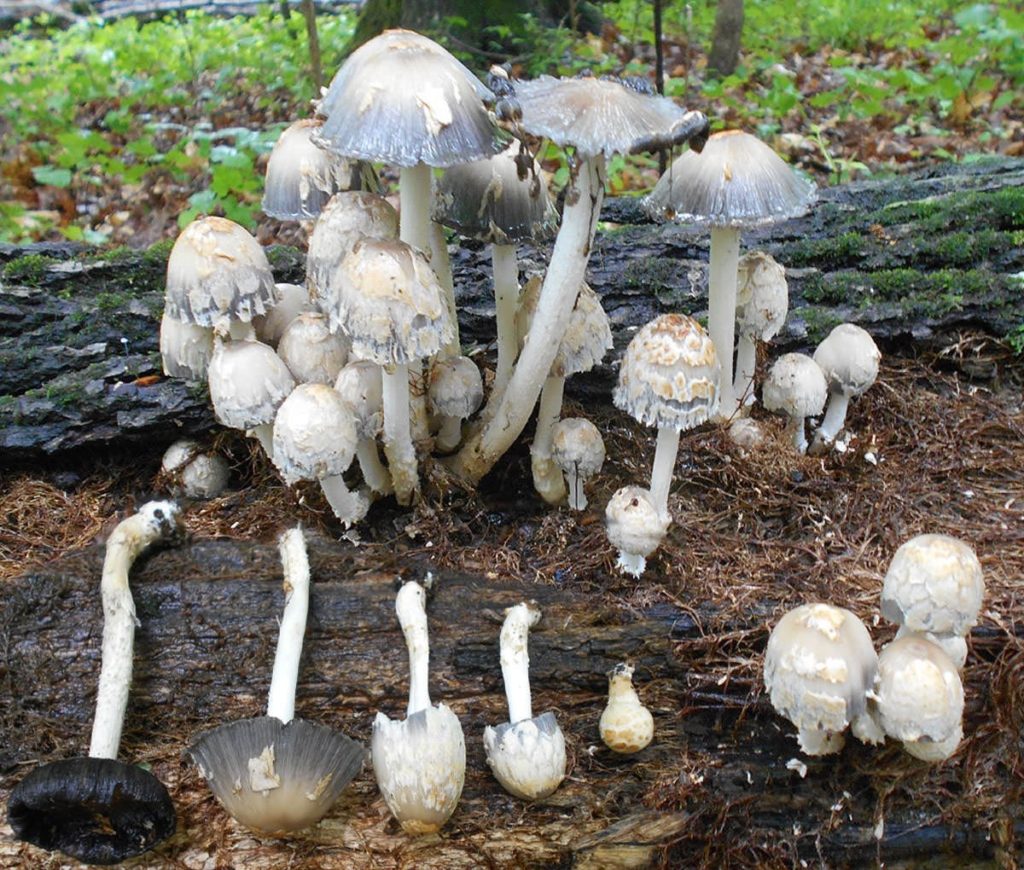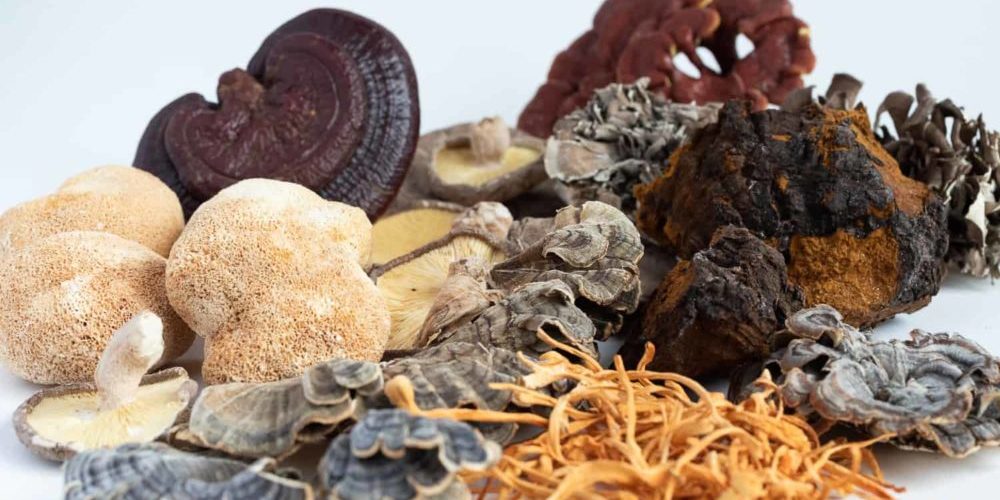Coprinopsis variegata is also known as a scaly ink cap or a feltscale inky cap; this is because the cap is covered in scales. Mycologist Charles Horton Peck first described three species mushrooms over a period of 24 years, these were Coprinus ebulbosus and Coprinus quadrifidus. Subsequent microscopic analysis and a number of independent investigations revealed the differences were not great enough to describe them all as distinct species. In 1979, Patrick concluded that Coprinopsis variegata was the correct name and assigned Coprinus ebulbosus and Coprinus quadrifidus as synonyms.
Variegata refers to the presence of different colors and variegated structure. This describes Coprinopsis variegata due to the multicolored cap, produced by scales and a striated appearance. It is an impressive looking mushroom and is often found in large clusters.
Coprinopsis variegata is one of the earliest mushrooms to fruit and may appear multiple times in the same spot. As confirmed by its name and like all ink caps, Coprinopsis variegata will not remain for long before dissolving into an inky mess. With this in mind, if they are picked, they need to be dried more or less immediately as they will disintegrate.

My name is Austin Collins.
I've dedicated my life to Mushrooms.
I believe Mushrooms are the best kept secret when it comes to health and well being.
For that reason, I would like to share a company with you that in my opinion makes the best mushroom products on the market.
The company is called Noomadic Herbals, my favorite supplement they make is called "Mushroom Total".
I take their products every day and they have helped me think better and have more energy. Give them a try.
-Austin
Coprinopsis Variegata Identification and Description
Cap: Thin; medium-sized. Colored off white, becoming grey or brown with maturity. Starts oval and then becomes bell-shaped before flattening with an upturned edge. Up to 7.5cm in diameter. Large scales, loosely attached that are off white or off yellow.
Gills: Separate from the cap; attached to stem; go dark with maturity becoming black and ink-like. Wide but thin and crowded.
Stem: Up to 12cm tall. 1cm in diameter; hollow with a felty feel. Remnants of a partial veil may be present.
Smell: Unpleasant or non-distinctive.
Taste: Unpleasant or non-distinctive.
Spores: Smooth; elliptical. Central pore inside the pore.
Spore color: Black; purple black or black brown.
Edibility: Subject to debate. Some report eating; gill color must be checked for freshness. Some suggest they are edible when young.
Habitat: Usually found fruiting in large clusters, may be found alone. Likes decaying hardwood, preferably well rotted. Found in parks and woodland. Native to Eastern North America. Being a decomposer it likes to fruit among decaying leaves and on decaying wood. Fruiting season is June and July.
Coprinopsis Variegata Look-Alikes
Coprinopsis variegate is not to be confused with its relative Coprinopsis atramentaria, also known as the common inky cap. Coprinopsis atramentaria is very similar in size, shape, and color, but the tufts on the cap are absent in Coprinopsis atramentaria. It can also be distinguished by fruiting season since Coprinopsis atramentaria and another similar species, Coprinus comatus, fruits in late fall when compared to Coprinopsis variegata fruiting in Spring/early Summer. Caution should be taken as Coprinopsis atramentaria can cause hot flushes, shortness of breath, headaches, and sweating. There may be neurological issues such as tingling in the limbs.
Coprinopsis Variegata Benefits
There are no reports that Coprinopsis variegata has any therapeutic benefits.
Coprinopsis Variegata Dosage
There are mixed reports as to whether this mushroom is edible. There is evidence of gastric issues when consuming Coprinopsis variegata in addition to allergic reactions (see below). There is no confirmed dosage, always seek professional advice before consumption.
Coprinopsis Variegata Toxicity, Safety & Side Effects
Coprinopsis variegata has been reported to cause sickness in the presence of alcohol with mild to extreme symptoms. This is due to the presence of coprine, a mycotoxin,, found in the fruiting body. There have also been reports of allergic reactions when consuming Coprinopsis variegata. The edibility of the Coprinopsis variegata may be more dependent upon where is grows, but caution is advised and professional advice sought from a mycologist.





I am thinking about dehydrating the clusters that I found. I also found some chlorophyllum molydbites. I’ll keep foraging for edibles